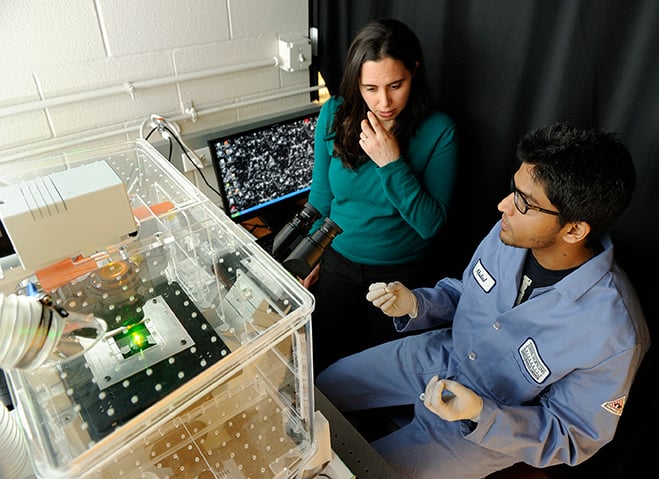
In a microscopic feat that resembled a high-wire circus act, a Whiting School team has coaxed DNA nanotubes to assemble themselves into bridgelike structures arched between two molecular landmarks on the surface of a lab dish.
This self-assembly bridge process may someday be used to connect electronic medical devices to living cells, says Rebecca Schulman, an assistant professor of chemical and biomolecular engineering, whose team reported its findings in Nature Nanotechnology.
To accomplish the self-assembly task, the researchers turned to DNA nanotubes. These microscopic building blocks, formed by short sequences of synthetic DNA, have become popular materials in the emerging nanotechnology construction field.
The ability to assemble these bridges, the researchers say, suggests a new way to build medical devices that use wires, channels, or other devices that could “plug in” to molecules on a cell’s surface. Such technologies could be used to understand nerve cell communication or to deliver therapeutics with unprecedented precision. Molecular bridge building, the researchers say, is also a step toward building networked devices and “cities” at the nanoscale, enabling new components of a machine or factory to communicate with one another.
Web Extra
Watch a time-lapse video of the nanoscale bridge-building process.




